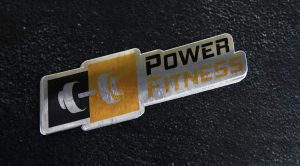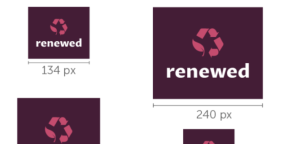Are you looking to create a logo for your business or brand? One of the first steps in the logo design process is creating a logo brief. A logo brief is a document that outlines the key details and requirements for your logo design project. It serves as a roadmap for the designer, ensuring that they have a clear understanding of your brand, target audience, and design preferences.
Your logo is the face of your brand, and it’s important to get it right. A well-crafted logo brief can help you achieve this by providing the designer with the necessary information to create a logo that accurately represents your brand and resonates with your target audience. A logo brief typically includes information such as your brand’s mission statement, target audience, design preferences, and any specific requirements or constraints for the project.
By taking the time to create a comprehensive logo brief, you can ensure that your designer has a clear understanding of your brand and design goals. This can help to streamline the design process and increase the likelihood of creating a logo that you’re happy with. So, if you’re planning to create a logo for your business or brand, be sure to start with a well-crafted logo brief.
Logo Brief Purpose
A logo brief is a crucial document that outlines the goals, objectives, and constraints of your logo design project. It serves as a communication tool between you and your logo designer, helping them understand your business and create a design that aligns with your needs. In this section, we will discuss the purpose of a logo brief and its sub-sections.
Understanding the Brand
The first sub-section of a logo brief is understanding the brand. This is where you describe your brand and its personality. You should include information about your target audience, your industry, and your unique selling proposition. This information will help your designer understand the values and characteristics that your logo should convey.
To make this section more effective, you can use tables, bullet points, and bold text to highlight key information. For example, you can use a table to list your brand’s attributes, such as trustworthy, innovative, or eco-friendly. You can also use bullet points to list your target audience’s demographics, such as age, gender, and income.
Logo Usage
The second sub-section of a logo brief is logo usage. This is where you describe how your logo will be used and where it will appear. You should include information about the media and platforms that your logo will be used on, such as websites, social media, or print materials. You should also include any specific guidelines or restrictions on the use of your logo, such as color schemes or font styles.
To make this section more effective, you can use examples and visual aids to show how your logo will be used. For example, you can include mockups of your logo on a website or social media page. You can also use bold text to highlight any important guidelines or restrictions.
In summary, the purpose of a logo brief is to provide your designer with a clear understanding of your brand and how your logo will be used. By including information about your brand’s personality and logo usage, you can ensure that your designer creates a logo that accurately reflects your business and resonates with your target audience.
Design Specifications
When it comes to designing a logo, there are certain design specifications that you need to keep in mind. These specifications will help ensure that your logo is visually appealing and effective in representing your brand. In this section, we will discuss the three main design specifications that you need to consider: Color Palette, Typography, and Logo Variations.
Color Palette
Choosing the right color palette for your logo is crucial. Colors have a psychological impact on people and can convey different emotions and messages. For example, blue is often associated with trust and professionalism, while red is associated with passion and excitement.
When selecting your color palette, consider the following:
- Your brand’s personality and values
- The emotions and messages you want to convey
- The industry you are in and the colors commonly used in that industry
- The cultural connotations of different colors in different regions
It’s important to choose a color palette that is visually appealing and consistent with your brand’s identity.
Typography
Typography refers to the style and arrangement of text in your logo. The right typography can make your logo stand out and convey a sense of professionalism and sophistication. When selecting typography, consider the following:
- The font style and size
- The spacing between letters and lines
- The legibility of the text at different sizes
- The appropriateness of the font for your brand’s personality and values
It’s important to choose typography that is unique and memorable while also being legible and appropriate for your brand.
Logo Variations
Your logo will be used in a variety of contexts, so it’s important to create variations that can be used in different situations. For example, you may need a horizontal version of your logo for use in letterheads or a simplified version of your logo for use on social media.
When creating logo variations, consider the following:
- The different contexts in which your logo will be used
- The size and resolution of the logo in each context
- The amount of detail that can be included in each version
Creating logo variations will ensure that your logo is versatile and effective in representing your brand in different situations.
Overall, paying attention to these design specifications will help you create a logo that is visually appealing, memorable, and effective in representing your brand.
Target Audience
Your target audience is the group of people your logo is designed to attract. Identifying your target audience is crucial to creating a logo that resonates with them. Here are some steps to help you define your target audience:
- Analyze your customers: Look at your past or current customers and gather information about their demographics, interests, and values. This will give you a better understanding of who your logo should appeal to.
- Create customer personas: Use the information you gathered to create customer personas. These are fictional representations of your ideal customers, including their age, gender, interests, and behaviors.
- Consider your industry: Think about the industry your business operates in and the types of customers that are typically attracted to it. For example, if you’re in the fitness industry, your target audience is likely health-conscious individuals who value physical activity.
Once you have a clear understanding of your target audience, you can use this information to guide the design of your logo. Make sure your logo appeals to your target audience’s interests and values, and communicates the message you want to convey about your brand.
Competitor Analysis
One of the most important steps in creating a successful logo design is conducting a competitor analysis. This process involves researching and analyzing the logos of your competitors to gain insight into their branding and design strategies. By doing so, you can identify what works and what doesn’t, as well as find opportunities to differentiate your brand.
To begin your competitor analysis, start by researching the logos of your direct competitors. Look at their color schemes, typography, and graphic elements. Take note of what stands out and what seems to be working well for them. You can use this information to guide your own design decisions.
It’s also important to look beyond your direct competitors and examine the logos of other brands in your industry. This can help you identify trends and patterns that are common in your niche. You may also find inspiration for your own logo design by looking at the logos of successful brands in other industries.
When analyzing your competitors’ logos, don’t just focus on the visual elements. Consider the message and values that their logos convey. Are they playful and whimsical, or serious and professional? What emotions do their logos evoke? Understanding the underlying message of your competitors’ logos can help you make more informed design decisions for your own logo.
Overall, a thorough competitor analysis is an essential step in creating a successful logo design. By understanding what works and what doesn’t in your industry, you can create a logo that stands out and effectively communicates your brand’s message.
Timeline and Deadlines
Creating a logo is a process that requires time and effort. To ensure that your logo design project is completed on time, it is essential to set clear deadlines and a realistic timeline. Here are some tips to help you create an effective timeline and meet your project deadlines:
Define Your Timeline
When creating a timeline for your logo design project, consider the following factors:
- Research: Allow time for research to gather information about your brand, target audience, and competitors.
- Sketching and Conceptualization: Give yourself enough time to sketch and brainstorm ideas before moving on to the digital design process.
- Design: The design process can take several rounds of revisions. Allow enough time for feedback, revisions, and finalizing the design.
- Delivery: Set a realistic deadline for delivery of the final logo files.
Set Clear Deadlines
Setting clear deadlines is essential to ensure that your project stays on track. Consider the following when setting deadlines:
- Milestones: Break down your project into milestones and set deadlines for each milestone.
- Communication: Communicate your deadlines clearly to your designer and any other stakeholders involved in the project.
- Flexibility: Be flexible and realistic with your deadlines. Unexpected delays can happen, so build in some extra time for unforeseen circumstances.
Work with Your Designer
Working with your designer is crucial to creating a successful logo design project. Here are some tips to help you work effectively with your designer:
- Communication: Keep open lines of communication throughout the project to ensure that you are both on the same page.
- Feedback: Provide clear and constructive feedback to your designer to help them understand your vision.
- Trust: Trust your designer’s expertise and allow them to guide you through the design process.
By following these tips, you can create a realistic timeline and set clear deadlines for your logo design project. Working effectively with your designer will help ensure that your project is completed on time and meets your expectations.
Budget
When it comes to creating a logo, budget is an important factor to consider. You want a logo that accurately represents your brand and sets you apart from your competitors, but you also don’t want to break the bank. Here are some tips on how to budget for your logo design:
Determine Your Budget
Before you start looking for a designer, it’s important to determine how much you’re willing to spend on your logo. The cost of a logo can vary greatly depending on the designer’s experience, the complexity of the design, and the number of revisions you request. Some designers charge a flat rate, while others charge by the hour.
As a general guideline, you can expect to pay anywhere from $100 to $5,000 for a logo design. Keep in mind that a higher price doesn’t necessarily mean a better logo. It’s important to find a designer whose style and experience aligns with your needs and budget.
Find a Designer That Fits Your Budget
Once you’ve determined your budget, it’s time to start looking for a designer. There are many online marketplaces and freelance websites where you can find designers of all levels and price ranges.
Be sure to review the designer’s portfolio and read reviews from previous clients. This will give you an idea of their style and quality of work. Don’t be afraid to ask for references or to negotiate on price if necessary.
Communicate Your Budget with Your Designer
When working with a designer, it’s important to communicate your budget upfront. This will help them understand your expectations and limitations.
Be clear about what you’re willing to pay and what you expect in return. This will help avoid any misunderstandings or surprises down the road. Keep in mind that a designer may not be able to accommodate all of your requests within your budget, but they may be able to suggest alternative options.
By following these tips, you can create a budget for your logo design that works for both you and your designer.
Marietta Arnold is a branding and design enthusiast who draws inspiration from hobbies like hiking, photography, and art exploration. With a background in graphic design, she shares insights on branding strategies and logo design trends. Stay updated with Marietta’s work for the latest in branding and design.



